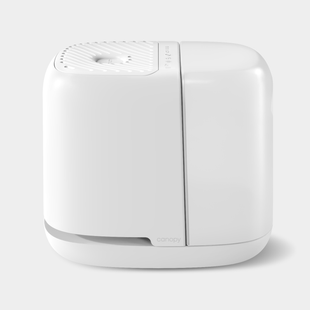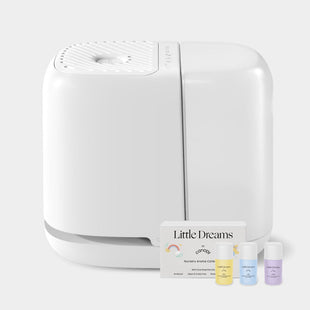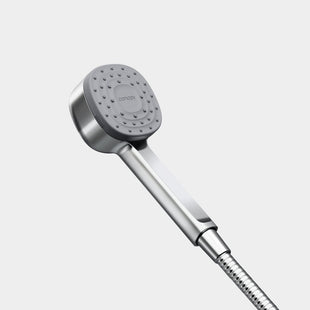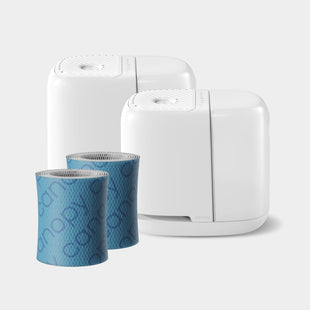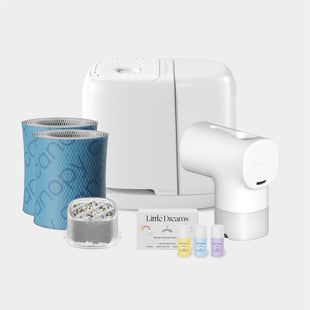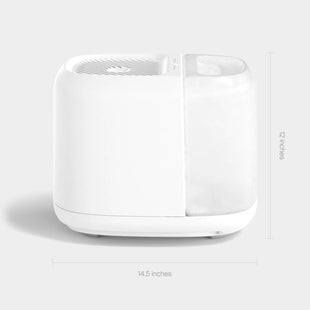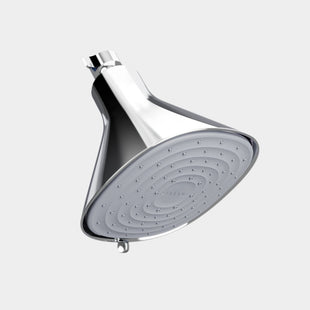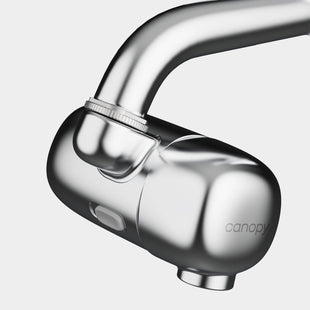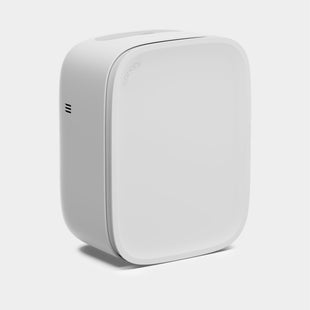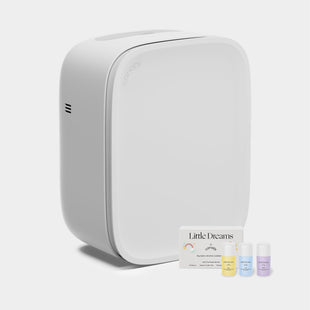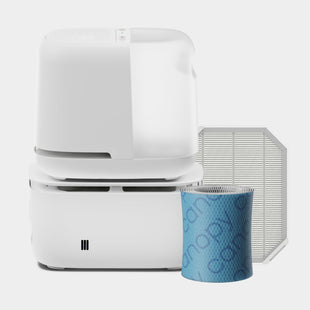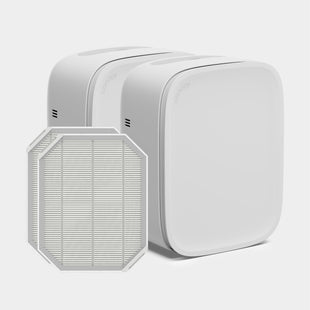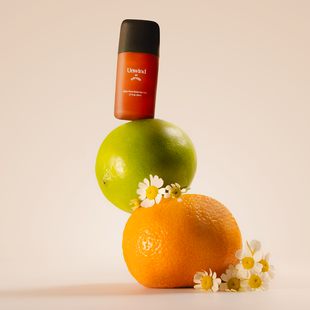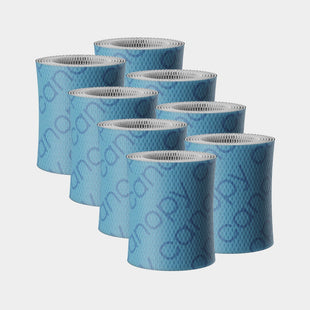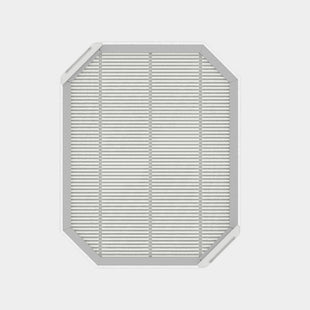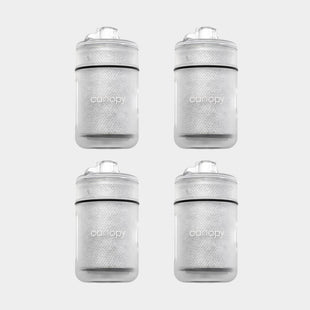After a long, cold winter, we all look forward to warm, sunny days spent outdoors. Although a breath of fresh air is always welcome, pollen and other airborne substances can quickly put a damper on your day. Sneezing, watery eyes, and a runny nose may not exactly be how you envisioned starting your day.
The Centers for Disease Control and Prevention (CDC) reports that nearly 80 million Americans experience seasonal allergy symptoms. Spring allergies typically start in late February and dissipate by early summer, peaking in mid-spring when grass and trees release the most pollen. Summer allergies can persist from lawn mowing, but late-blooming plants, such as tumbleweed and ragweed, can create a host of allergy symptoms throughout the late summer and even early fall. Additionally, pollutants, such as wildfire smoke and debris, can make allergies feel worse throughout the season.
Regardless of what causes seasonal allergies and when they occur, spring allergy symptoms can keep you from getting a good night’s sleep or enjoying activities outdoors.
At Canopy, we understand that allergies can sometimes bring uncomfortable side effects, including dry sinuses, which is why we developed this helpful guide to managing allergy season. We’re sharing advice and helpful tips for both adults and children on how to treat seasonal allergies so you feel more comfortable.
What Are Common Air Quality Challenges That Trigger Allergies?
During the winter, it’s common to deal with indoor air quality issues, like dryness and dust, that can cause parched, itchy skin and nasal congestion. As humidity levels increase in spring, some of those challenges dissipate. However, the beautiful greenery that makes spring and summer so delightful—leaves on trees, grass, and flowers—can also make you sick.
Allergy symptoms occur when your immune system overreacts to a foreign substance in your body. When it detects the presence of something that shouldn’t be there, like pollen or dust mites, it releases antibodies to signal the cells that they need to stop the substance. They do this by releasing histamines, which cause blood vessels to expand. The histamines are the culprits in your seasonal allergy symptoms, including:
- Sneezing
- Sinus congestion
- Eczema
- Red, watery, and itchy eyes
- Cough
- Hives
So, how do you treat seasonal allergies? The best approach depends on what is causing your reaction and whether it’s coming from outdoors or indoors.
Allergies and Outdoor Air

According to the American Academy of Allergy, Asthma, and Immunology (AAAI), the most common outdoor allergens in the spring are pollen and mold.
Plants and trees produce pollen as a fertilizer; when the wind blows the tiny particles around, they fertilize other plants for rapid growth. Most people with seasonal allergy symptoms are allergic to a specific type of pollen due to the antibodies the immune system produces, which are single-mindedly focused on one allergen.
Mold spores in the air can also trigger allergy symptoms. As temperatures rise, mold in the soil and plants spreads, and spores fill the air. Mold can cause similar symptoms that mirror pollen allergies.
While exposure to these airborne allergens most often causes respiratory symptoms. like a stuffy nose, they can cause hives and rashes when they land on exposed skin. It’s common for allergies to trigger eczema flare ups, too, resulting in red, dry, and itchy patches of skin.
Allergy symptoms can also become exacerbated when exposed to smoke from bonfires or wildfires. Inhaling smoke can cause inflammation in the respiratory system and potentially dry out airways, making it difficult to breathe. Since bonfires are often a staple activity in the summer, make sure to sit several feet from the flames to avoid inhaling the smoke. When exposed to a wildfire, remain indoors, close all windows and doors, and use air purifiers to help remove contaminants and allergens.
How to Handle Outdoor Allergy Triggers
Keeping pollen and mold away from your skin and nasal passages is the best way to avoid the worst outdoor allergy symptoms. You can use a weather app to get the pollen counts in your area; try to avoid going outdoors when levels are excessively high.
Other ways to keep outdoor allergens at bay include:
- Keeping windows closed, including car windows while driving
- Assigning yard work chores like raking and mowing the lawn to someone else
- Showering and changing your clothes after spending time outside
- Using the dryer instead of hanging laundry outdoors to dry
- Wearing a quality pollen mask when spending time outside
If you develop seasonal allergy symptoms, taking an antihistamine can help relieve congestion and watery, itchy eyes. Using a humidifier can also help ease your symptoms. Hydrating the air can help moisten nasal passages and alleviate congestion, as well as reduce the discomfort of dry and itchy skin.
Allergies and Indoor Air

Indoor air can contain just as many allergens as outdoor air. When you step outside to let your pets into the yard, grab the mail, run an errand, or simply for a breath of fresh air, pollen can actually cling onto your clothes. In fact, you can transfer pollen directly from your clothes and onto your bed, couch, or anywhere else that you sit in your home.
To avoid bringing pollen indoors, change your clothes and wash your hair, hands, and face before getting in bed. Additionally, if you hang your clothes to dry outdoors, avoid doing so during high pollen days. Instead, hang them indoors or stick them in the dryer.
Your home can contain other allergens that can worsen your symptoms, like dust mites. From experiencing uncomfortable dry nose symptoms to constantly rubbing your eyes, your indoor air can make having a congestion-free day a challenge.
How to Achieve Healthy Indoor Air
Remaining indoors with the windows closed when pollen counts are high can do a lot to prevent seasonal allergy symptoms, but that doesn’t mean you’re completely in the clear. In fact, there can be just as many allergens indoors as there are outside.
The American Asthma and Allergy Foundation (AAFA) suggests taking steps to control allergens in your home. Reduce dust by keeping clutter to a minimum, vacuuming frequently, and using covers on your mattress and pillows to keep dust mites and other allergens at bay.
Other tips for controlling indoor allergies include:
- Washing bedding/linens once a week
- Keeping pets off your bed
- Eliminating carpet wherever possible
- Adopting a “no shoes” policy indoors
- Running an air purifier daily
Running the air conditioner, especially at night, will also help block allergens from entering your home. Air conditioners help filter the air, removing contaminants and preserving air quality. However, keep in mind that running the air conditioner can also remove moisture from the air, which can make the space feel dry and stuffy and increase eye and skin irritation.
The good news is that you don’t have to compromise between having clean, breathable air and a cool space—you can have both. Using a vaporizer or humidifier in your living room or bedroom can help you achieve optimal humidity levels when running the air conditioner all summer long. But why do humidity levels matter, and how can a humidifier help reduce allergy symptoms?
Canopy Solutions for Spring Allergies

Seasonal allergy symptoms are a nuisance at best. While there are many treatment options available to address the runny nose, sneezing, eye irritation, and other frustrations that come with seasonal allergies, creating a soothing environment is among the easiest approaches to try.
Canopy products can help to alleviate many of the woes that come with allergy season. From our humidifiers which boost indoor moisture for better respiratory health to our showerheads designed to support smooth, nourished skin through changing weather conditions, here’s how Canopy can see you through the most common spring allergy symptoms.
Benefits of Using Humidifiers
How long do spring allergies last? The answer can vary significantly depending on factors like your geographical area and weather patterns. And no matter what causes seasonal allergies to stir up symptoms for your family, assessing your indoor air quality is a great place to start.
Using a humidifier can boost the relative humidity levels of your indoor environment. This can have a soothing effect on your nasal passages and airways. While added moisture won’t necessarily alter how your immune system reacts to allergens, having well-hydrated air can reduce inflammation in your nasal tissue, reducing congestion and sinus pressure.
Canopy’s in-home humidifiers are unique in that they don’t produce mist. Our Bedside, Nursery, and Large Room humidifiers operate using our unique evaporative technology. Water passes through a UV light to inhibit bacteria and mold* development inside the humidifier, and a sensor works to maintain optimal moisture day and night. When it’s time to wash the tank, cap, and tray of the system, simply pop them in the dishwasher for an easy clean. Please note that the body should not be placed in the dishwasher, as it houses the unit’s electrical components.
Humidifiers offer several options for placement. You might put the device in the area with the highest concentration of activity. Since we tend to spend around six to eight hours sleeping, many people choose to put their humidifier in the bedroom. This approach helps to promote healthy, breathable air while you sleep, which can be especially important if you’re experiencing allergy symptoms like a sore throat or respiratory issues.
You might also consider placing your humidifier in a room or location where you need increased moisture the most. Use a hygrometer to assess the humidity levels in your house. If a certain area has less than 40% humidity, placing a whole room humidifier in that location can deliver the greatest benefit of optimal humidity levels.
If you’re wondering how to treat seasonal allergies in young children, placing a humidifier in their room can be beneficial for them, too. Like adults, babies can experience nasal and respiratory symptoms, and dry air can also leave their sensitive skin raw and irritated. Just be mindful about where you place your baby’s humidifier: Sit the device on a shelf or furniture where both the unit and the cords are far away from curious hands. That way, when your child is ready to start exploring, spills won’t be a concern.
Room size is also a key consideration for placing the right humidifier in your space during allergy season. Here’s a breakdown of Canopy’s humidifier models to help you determine which one will best suit your needs.
Canopy’s Humidifiers
Bedside & Nursery Humidifier
Canopy's Bedside Humidifier has a 500 square foot output, making it the perfect option for most bedrooms. Our Nursery Humidifier boasts the same output, so turn to either of these devices for a space with a square footage of 500 feet or less.
Large Room Humidifier
Our Large Room Humidifier delivers moisture to spaces as large as 1,000 square feet. Homes with open-concept layouts are perfect for this model, which allows you to hydrate common areas with a single device.
Portable Humidifier
Allergies can dwell anywhere you go, and spaces like offices and hotel rooms are no exception. For on-the-go hydration, Canopy’s Portable Humidifier is a convenient solution. This travel-ready companion creates a cool, fine mist to achieve balanced moisture no matter where you go.
Do Showerheads Help Alleviate Allergies?

Well-hydrated air isn’t the only concern during allergy season. If you experience seasonal allergies, you might also find that your skin becomes more sensitive this time of year. From weather changes, like varying humidity levels, to increased inflammation, there are several factors that can lead to dryness and irritation. Plus, you could carry allergens inside with you after a day outdoors. It’s especially important to shower frequently to minimize the amount of pollen you encounter. Not only can the substance aggravate your allergy symptoms, but it could also lead to uncomfortable skin symptoms, like rashes and hives.
Fortunately, it’s easy to give your skin some extra care and attention to combat the effects of allergies. Fine-tuning your moisturizing routine is one option. When your skin is dry and irritated, you may need to switch to a thicker formula, such as a cream instead of a lotion. But before you lock in moisture with any products, it’s also important to make sure you’re pampering your skin with high-quality water. Otherwise, it will be near-impossible to undo the drying effects of hard water in your shower.
Canopy’s Showerhead Solutions
Filtered Showerhead
Traditional household water can damage your skin by leaving dissolved minerals and added chlorine behind, leading to dryness and irritation. Added chlorine can also disrupt your skin’s barrier by stripping away its natural oils. If your skin is already irritated during allergy season, the effects of these chemicals could be even greater.
Canopy’s Filtered Showerhead is the simple solution. Our proprietary filtration system removes dissolved minerals and chlorine for skin-friendly water. It’s also simple to install without any tools, and the filter is a cinch to replace, too. And with the option to choose between four different finishes and add Canopy’s signature aromas, your daily shower becomes a spa-like experience.
Handheld Filtered Showerhead
Delivering all the benefits of our traditional Filtered Showerhead in a convenient detachable fixture is our Handheld Filtered Showerhead. This accessible design makes it easy to bathe your little ones with clean, filtered water, especially if they experience seasonal allergies. And like the original showerhead, it’s easy to install without any tools and can even be added on to your existing unit with our Showerhead Accessories Kit.
This high-pressure device also comes with an optional scalp massage attachment, so you can scrub deep into your scalp to remove any lingering allergens that can get trapped in your hair.
*Mold inhibition limited to device interior. Does not treat air or environment. 3rd party lab-tested with Aspergillus niger (ATCC 6275, 16404).


